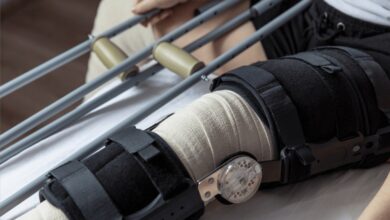What Is Domestic Violence? Understanding the Full Spectrum
Learn how domestic violence affects victims beyond physical harm, including emotional, psychological, and economic abuse. Awareness is key to prevention.

Domestic violence is a pattern of abusive behaviours, physical, emotional, sexual, psychological, or economic, perpetrated by a family member or intimate partner. It goes far beyond physical injury, impacting survivors’ mental health, sense of safety, and ability to function. Understanding its full spectrum is essential to prevention, support, and recovery.
1. Why Definitions Matter
Clear definitions give voice to survivors and clarity to service providers. “Domestic violence and abuse” and “intimate partner violence” often overlap but aren’t identical. Family violence may involve elder abuse, child abuse, or harm by a sibling—patterns that deserve focused attention and interventions.
By separating physical abuse, emotional abuse, sexual abuse, and economic abuse, we grasp the full picture, spot warning signs early, and tailor help to victims’ unique needs.
2. Understanding Domestic Violence
What Is Physical Abuse?
Physical abuse refers to any form of violent behaviour that causes bodily harm. This includes hitting, slapping, choking, pushing, or restraining someone against their will. Victims of physical abuse often suffer from visible injuries like bruises, fractures, or cuts, but the emotional toll can be just as damaging. In many cases, physical violence is part of a larger pattern of control and intimidation, particularly in intimate partner violence.
If you or someone you know is being harmed, speaking with a qualified domestic violence lawyer can help clarify your legal rights and the options available to protect yourself.
Emotional & Psychological Abuse
Emotional or psychological abuse is a form of domestic abuse that damages a person’s sense of self-worth and emotional security. It includes behaviours like verbal abuse, threats, humiliation, manipulation, and isolation. Abusers may control their victims through gaslighting, constant criticism, or by cutting them off from friends, family, and finances. This type of abuse often goes unnoticed, but it can lead to long-term mental health issues like anxiety, depression, low self-esteem, and post-traumatic stress disorder.
Unpacking Sexual Abuse
Sexual abuse in a domestic setting includes any unwanted or non-consensual sexual activity. This can involve forced sex, sexual coercion, or manipulation within a relationship. In more extreme cases, it includes incest, forced marriage, child sexual abuse, and female genital mutilation. Survivors often face a combination of physical harm, such as injuries or infections, and emotional trauma, including shame, guilt, and fear.
Economic & Financial Abuse
Economic or financial abuse occurs when one person controls another’s access to money and resources to maintain power over them. This might look like preventing someone from working, taking their earnings, withholding access to bank accounts, or sabotaging job opportunities. Financial dependency can trap someone in an abusive relationship, making it difficult to leave or seek help.
3. The Impact of Domestic Violence
On Victims & Family Members
- Domestic violence victims may experience physical injury, chronic pain, dental or eye damage.
- Emotional wounds, hopelessness, guilt, fear can last for years.
- Economic abuse strips away independence and future stability.
On Children & Child Witnesses
- Children exposed to family violence risk being abused themselves or developing emotional trauma.
- They often develop mental health problems, poor school performance, attention deficit hyperactivity disorder, behavioural issues, or form unhealthy relationships later.
Mental & Physical Health Effects
- PTSD, depression, chronic anxiety, sleep disorders, and substance abuse may result from repeated trauma.
- Physical illness, gastrointestinal problems, hypertension, and sexual/reproductive health issues are common fallout from long‑term stress.
4. Risk Factors & Warning Signs

Recognizing risk factors helps with early detection and prevention:
- History of child abuse, past abuse in relationships
- Substance or alcohol abuse
- Rigid beliefs about gender roles or sexual orientation
- Controlling behaviour, jealousy, stalking
- Financial dependency, isolation, and low self‑esteem
- Mental illness in the abuser (e.g., depression, personality disorders)
- Life stressors: job loss, forced marriage, homelessness
5. Breaking the Cycle: Support & Intervention
What to Do If You Experience Domestic Violence
- Acknowledge You Deserve Safety – You are not to blame.
- Create a Safety Plan – Identify exit routes, prepare essentials (keys, documents, money).
- Tell Someone You Trust – Seek help from family, friends, or coworkers.
- Contact Support Services – Hotlines, shelters, crisis centers, legal clinics.
- Use Protection Orders – Police, domestic violence units, or community legal advisors can assist.
- Document Abuse – Photos of injuries, saved messages, medical/incident reports.
Support Services & Legal Protections
- Non‑profits & hotlines provide 24/7 confidential support.
- Shelters offer safety, counselling, and legal help.
- Legal aid can help file protection orders or navigate criminal prosecution. Accessing experienced legal assistance is a critical part of safety planning. If you’re located in Alberta, Dunlap Criminal Defence Lawyer provides trusted support for individuals navigating domestic violence charges or seeking legal protection.
- Counselling & advocacy empower domestic violence victims to rebuild lives.
- Child protective services intervenes when children show risk.
- Police and criminal justice system may pursue charges in severe cases.
6. Prevention & Awareness
Protecting loved ones and communities includes:
- Community awareness campaigns, safe relationship education in schools
- Trainings for professionals: teachers, doctors, firefighters, clergy
- Family violence intervention programs and restorative justice models
- Laws against forced marriage, female genital mutilation
- Promoting healthy, equitable relationship skills
7. Conclusion & Final Thoughts
Domestic violence extends far beyond physical injury. Psychological abuse, sexual violence, and economic control chip away at dignity, stability, and future potential. To break the cycle, we must:
- Name and understand the full spectrum—physical, emotional, sexual, and financial
- Recognize risk factors and early warning signs
- Support victims with shelters, legal protection, counselling, and advocacy
- Educate communities about healthy relationships and gender equality
Nobody deserves abuse, whether they’re a spouse, parent, child, or elder. Solutions exist. If you or someone you know is affected, reach out for support. The journey toward safety and healing begins with information, and you’ve taken the first step by reading this.











